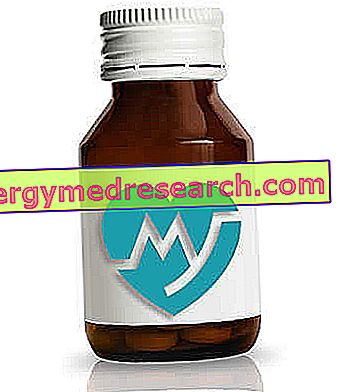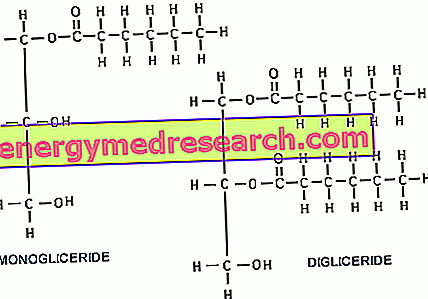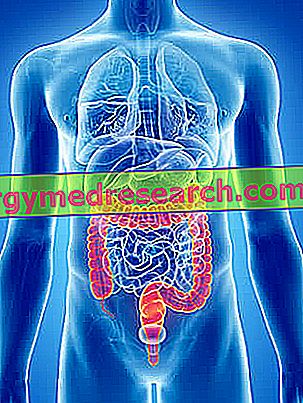Generality
Laser teeth whitening is an increasingly popular technique to restore new whiteness to yellowed and stained teeth.
A few years ago, in fact, the laser has taken hold in many fields of medicine, including that of aesthetic dentistry, where it is a technological alternative to the classic bleaching (or whitening) professional.

Action mechanism
How Does Teeth Whitening Work with Laser?
The laser tooth whitening technique consists of applying a gel based on hydrogen peroxide (H2O2) on the surface of the teeth. The same gel, activated by the laser, releases free radicals that penetrate through the dental enamel and reach the pigmented molecules of the teeth - responsible for spots or their yellowing - breaking them up by redox reactions; consequently, the teeth appear more white and shiny.
In light of what has been said so far, it should be pointed out that the real whitening action is to be attributed to the gel and not so much to the laser which, instead, simply acts as an "activator" of hydrogen peroxide. In other words, the laser acts as a catalyst for the chemical reaction that leads to the formation and release of oxygen which will penetrate the teeth and eliminate the spots.
The actual "whitening" of the teeth is visible immediately after the first session with the laser and, in the following days, the aesthetics of the smile improves further.
Indications
Laser teeth whitening is indicated to improve the appearance, color and shine of teeth. As we know, some substances can ruin the tooth color, creating small and unsightly hyperpigmented spots (black, yellow, red) that dull the entire tooth surface. Smoking, advancing age, pharmacological treatments (especially antibiotics) and the administration of particular foods or beverages - such as coffee, tea, licorice and artificial colorings - end up ruining the aesthetics of teeth. It is precisely in these circumstances that the use of laser is one of the many methods indicated for whitening teeth.
It is however necessary to point out that laser bleaching does not offer any additional advantage over the classic professional bleaching strategies. Indeed, the laser has the disadvantage of being generally more expensive.
Types of lasers
Types of laser lamps available (outline)
The FDA ( Food and Drugs Administration ) has approved three types of laser lamps used for tooth whitening:
- Diode laser : the most widely used for dental laser whitening. It effectively whitens stained or yellowed teeth and allows better penetration of the whitening substance into dental tissues
- Argon laser : emits high-energy photons capable of activating hydrogen peroxide applied to the tooth surface. During argon laser whitening no thermal rise occurs
- CO2 laser : unlike the argon laser, the CO2 laser raises the temperature. The temperature increase created can cause pulp irritations (the inner part of the tooth), therefore pulpitis.
Before treatment
Before performing teeth whitening with the laser it is always necessary to carry out a preliminary check-up. This visit must be carried out in order to identify any conditions, pathologies or disorders that could represent a contraindication to laser treatment or which could negatively influence the final results (such as, for example, the presence of any fillings that would not change color following the laser bleaching, thus becoming very evident).
However - if the doctor determines the patient's suitability for whitening the teeth with a laser - before proceeding with the treatment, it is necessary to perform a thorough professional cleaning, in order to eliminate all traces of tartar and / or plaque.

Treatment
Once the check-up is performed and deep cleaning is performed, it is possible to proceed with the actual tooth whitening.
The phases of teeth whitening with the laser can be described as follows:
- The doctor photographs the teeth before the treatment (useful for a post-whitening laser comparison).
- By means of a special instrument, the doctor divides the patient's mouth, in order to "expose" and make the dental arches completely accessible.
- Next, the doctor applies the 35% hydrogen peroxide bleaching gel.
- Once the gel is applied, the teeth are irradiated with laser light. The laser light beam emitted by the specific machine activates the gel with consequent release of oxygen. Subsequently, oxygen penetrates the tooth and gives rise to oxidation-reduction processes, capable of breaking up the hyperpigmented molecules (responsible for tooth stains) into smaller, colorless and easily removable fragments.
- After irradiation, the patient must remain in the same pose for 15-40 minutes, time necessary to allow the product to exercise its whitening action.
- After this time, the gel can be removed.
- Finally, the doctor takes a picture of the teeth after the treatment which will then be compared with the previous shot in order to evaluate the results obtained.
After treatment
Immediately after the laser teeth whitening treatment, a temporary increase in tooth sensitivity is almost normal. Many patients also experience a slight gingival burning, which sometimes leads to a more pronounced discomfort, which can soon be resolved spontaneously.
In the 4-5 days following bleaching, it is strongly recommended to avoid taking soft drinks with artificial colors, coffee, licorice, red wine and black tea. Smokers, on the other hand, should refrain from smoking for at least the entire post-treatment week.
Results
The results of teeth whitening with the laser are visible immediately. However, the maximum whitening effect is only visible after a few days after laser treatment.
However, the results obtained with this tooth whitening technique are always positive in patients who are generally satisfied.

Treatment limits
Although it is a technique that gives excellent results, teeth whitening with laser has several limitations.
If the yellowing or darkening of the teeth is caused by basic pathological conditions, whitening the teeth with the laser could, in fact, not give satisfactory results, or worse, could create "patchy" chromatic alterations that are completely unsightly that they would further worsen the already altered aesthetics of the patient's teeth.
Furthermore, as mentioned, laser bleaching has no effect on the fillings, just as it has no effect on the prostheses (whether they are composite or ceramic) both on implants and on natural teeth.
Contraindications
Not all patients can use laser as a way to whiten their teeth. In fact, it is not possible to proceed with the laser whitening of the teeth in these circumstances:
- Severe chronic diseases;
- Sick, hypersensitive or severely damaged teeth;
- Pregnancy;
- Feeding time;
- Allergy to one or more substances contained in the stain remover gel.
Furthermore, laser teeth whitening is generally contraindicated in children.
Please note
We remind you again that, before undergoing laser tooth whitening, it is necessary to ascertain the absence of caries, gingivitis, pulpits and tartar.
Useful tips
Tips and remedies to prolong the effect of Teeth Whitening with the Laser
Teeth whitening is not permanent and after a period of time varying from 12 to 24 months, the stains on the teeth can again disfigure the aesthetics of the smile.
To prolong the whitening effect made by the laser, careful daily home hygiene is recommended, combined with a professional cleaning by the dentist every 6-12 months.
Even some natural whitening substances can help to maintain a certain brilliance and an obvious whiteness of the teeth. For this purpose, the most suitable are sage, bicarbonate of soda, ash, strawberries and apples: these products, in contact with the surface of stained teeth, can help maintain the whiteness of the teeth produced for longer periods of time from the laser.
After a couple of years from the laser bleaching treatment, it is possible to remove the teeth again with alternative chemical techniques. For this purpose, whitening pens or stripes (available in pharmacies) are particularly suitable.
Furthermore, the dental masks coated with carbamide peroxide, applied directly on the dental arches as if they were removable appliances, can further improve the tone of the teeth.
costs
Unfortunately, the cost of laser teeth whitening can be considered as one of the disadvantages of this technique. In fact, the treatment in question is anything but economic, as its price is, approximately, around 300 €.
In this regard, however, it is important to remember how important it is to address only professionals in the sector who offer a quality service, therefore being wary of those who offer laser teeth whitening treatments at excessively low prices.



